What are the best sweeteners for the keto diet? Check out this comprehensive guide to baking with sugar substitutes, and learn how to get the taste and texture you crave!
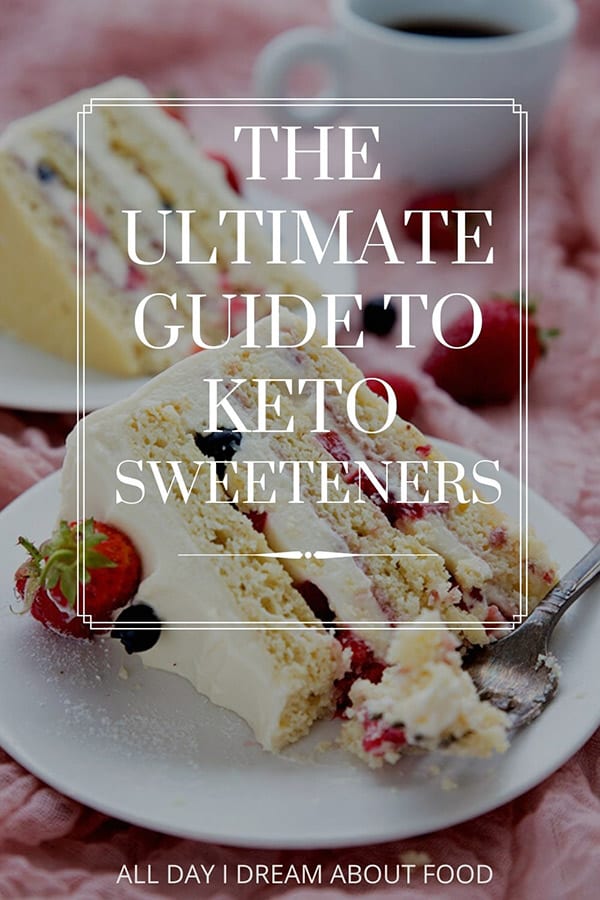
Today, my keto friends, I am imparting some of my vital knowledge and deep wisdom about using keto sweeteners. We will discuss all of their pros and cons, and how they affect the outcome of your keto desserts.
In advance of the holiday baking season, I figured you could put this information to good use. Because if you’re anything like me, you like to get an early jump on your keto holiday cookies!
This is actually an abridged version of the in-depth keto sweetener section in my book, The Ultimate Guide to Keto Baking. I think you will find it very informative.

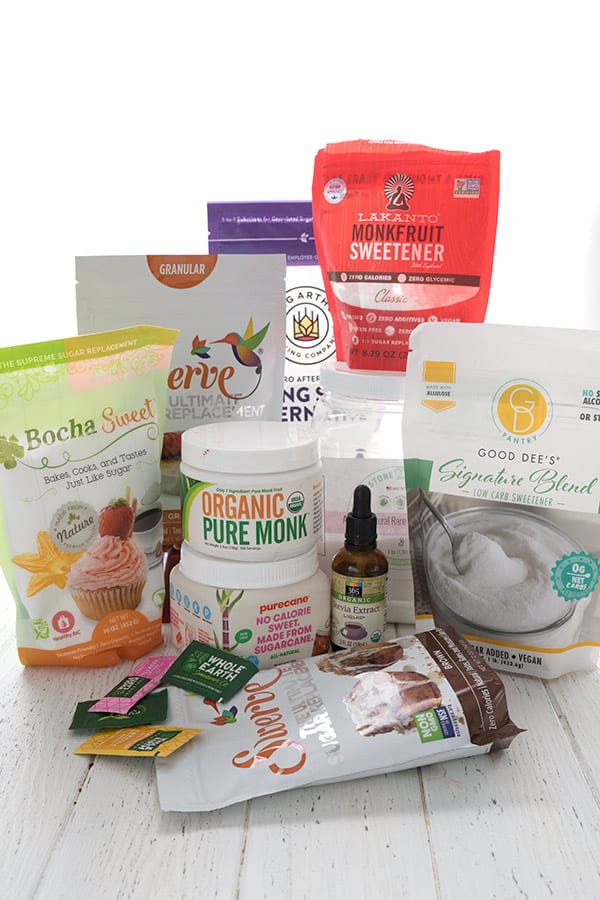
What is the best keto sweetener?
I’m sorry, I simply cannot answer that for you.
I’m not being willful or stubborn, or deliberately withholding information. It’s simply that there is no such thing. Yes, you read that right – there is no such thing as the best keto sweetener.
Here’s why: Everyone experiences these sugar substitutes differently. It’s almost as individual as the individual themselves.
- Some people experience an unpleasant aftertaste with one and not another.
- Some people suffer from GI issues or headaches when consuming certain sweeteners.
- Some people see a blood sugar rise when other people do not.
- Some people may even experience an allergic reaction to certain sweeteners.
With the sugar substitutes market constantly expanding and changing, it’s much more about finding what sweeteners work best FOR YOU.
What are the best sweeteners for keto baking?
Ah, now we’re on to something. This is my territory and one that I have researched extensively. I have experimented with a wide array of sugar substitutes and I can tell you straight up that none of them behaves exactly like sugar.
They all have very different properties and the sweetener(s) you choose will impact the outcome of your recipes. The trick is to understand their different attributes and use them to advantage.
Consider the final product before choosing your sugar substitutes. What are you trying to make? What consistency are you trying to achieve? Do you want it crisp or soft? Chewy or cakey? Should it be gooey or firm?
Most of the popular brands on the market are actually blends of two or more keto sweeteners. For simplicity’s sake, I am going to break them down into their main ingredients.
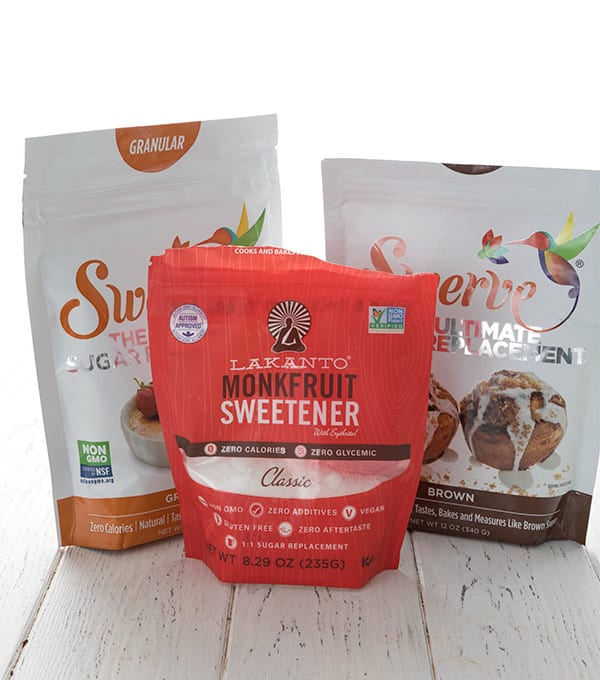
Erythritol
What is it?
Erythritol is a sugar alcohol (polyol) that is naturally present in some fruits and fermented foods. For mass production, it is made by fermenting a glucose syrup with enzymes.
It is unique among sugar alcohols in that it has zero carb impact. Our bodies simply do not recognize it as a carb so it does not impact blood sugar at all. And unlike many sugar alcohols, it does not cause gastrointestinal issues for most people.
How does it work?
Similar to sugar:
– Erythritol mimics sugar in its crystalline structure, so it helps whip air into butter and egg whites.
– It also browns and crisps up nicely and it can even be coaxed into caramelizing.
Differs from sugar:
– It’s only 70% as sweet as sugar, which is why most brands combine it with other sweeteners, to make it measure cup for cup.
– It’s non-hygroscopic, meaning that unlike sugar, it does not attract or hold onto moisture, which can cause baked goods to be dry and crumbly if they don’t have enough fat.
– It can re-crystallize as it cools, particularly in liquid applications like sauces, custards, and ice cream.
– Some people experience a mouth-cooling sensation, similar to sucking on a mint. Not everyone experiences this, and often mixing it with other sweeteners eliminates this sensation.
Major Brand Names: Swerve, Lakanto (this is mostly erythritol… do not be fooled by the fact that it calls itself a “monk fruit sweetener”), So Nourished, ZSweet.

Xylitol
What is it?
Xylitol is also a sugar alcohol found in some fruits and vegetables, as well as in wood and corn. It is usually manufactured commercially from corn or birch trees.
Some, but not all, xylitol is absorbed by the intestines into the bloodstream. This means it can cause some gastrointestinal discomfort when consumed in large amounts. It can also have an impact on blood sugar.
WARNING! The biggest issue with xylitol is that it is highly toxic to dogs.
How does it work?
Similar to sugar:
– It has a crystalline structure so it can whip air bubbles into butter and egg whites. It’s also as sweet as sugar.
– It’s more hygroscopic than erythritol so it attracts moisture and it doesn’t re-crystallize as it cools. Xylitol is great for ice creams and sauces to keep them soft.
Differs from sugar:
– Xylitol doesn’t caramelize or crisp up very well. This can cause problems for baked goods that need a crisp texture, like many keto cookies. They will turn out much more cakey and soft if you use xylitol.
– Definitely do NOT use for meringue, as it will stay gooey and soft, and won’t come off the parchment paper.
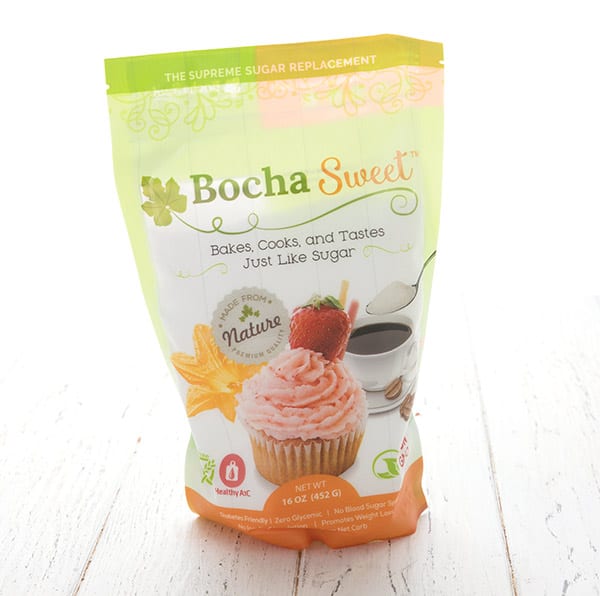
BochaSweet
What is it?
BochaSweet is the brand name of a unique sweetener derived from the kabocha squash, a type of winter squash also know as Japanese pumpkin.
Like erythritol, it seems to have little to no impact on most people’s blood sugar. But like xylitol, it can cause some gastrointestinal upset when consumed in large quantities.
In many ways, BochaSweet functions a lot like xylitol (they are both pentose sweeteners), but it does not appear to be toxic to household pets.
How does it work?
Similar to sugar:
– BochaSweet is as sweet as sugar and so can be used as a cup-for-cup replacement, without an apparent aftertaste.
– It is more hygroscopic and doesn’t re-crystallize so it’s great in sauces, custards, and ice creams. (I have started using it in combination with Swerve in all of my keto ice cream… they stay scoopable even straight from the freezer!).
Differs from sugar:
– Just like xylitol, BochaSweet will not crisp up or brown very well. Cookies end up soft and cakey, and meringues are so gooey that they won’t come off the paper.
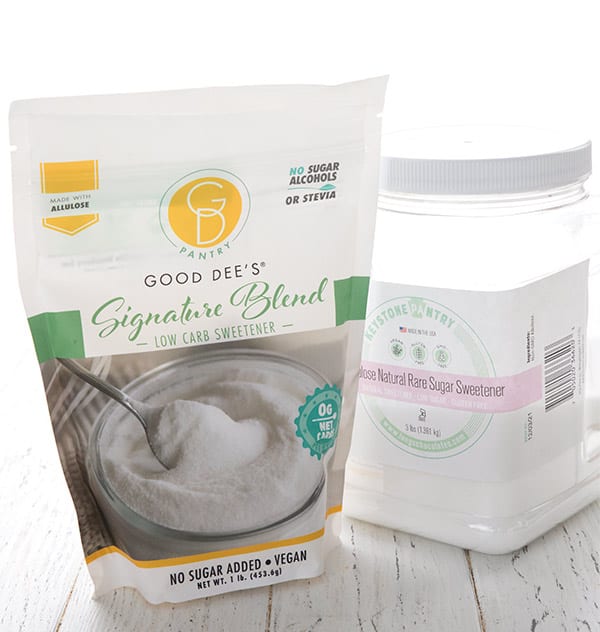
Allulose
What is it?
Allulose is a relative newcomer on the sugar alternative scene and has become incredibly popular. It is a monosaccharide, which means it really is a “sugar”, but one that our bodies don’t treat like a sugar or a carb. It is largely excreted without ever affecting blood glucose levels.
However, I caution you from personal experience that large amounts can cause serious GI distress. Many people don’t seem to suffer from this, but some of us do and it’s…not fun.
So it’s worth testing on yourself in small amounts and building up from there.
How does it work?
Similar to sugar:
– Allulose caramelizes nicely and tends to be hygroscopic, keeping sauces and ice creams soft, and baked goods tender.
Differs from sugar:
– Allulose is only 70% as sweet, which means you need more to sweeten your desserts.
– While it caramelizes well, it doesn’t crisp up well and baked goods tend to be soft and cakey. Even just a little allulose, in combination with other sweeteners, can prevent your cookies from becoming crisp.
– It can over-brown the outside of baked goods, especially the parts that are touching the sides of the pan. Cakes can have a dark, almost burnt appearance, although they aren’t over-cooked.
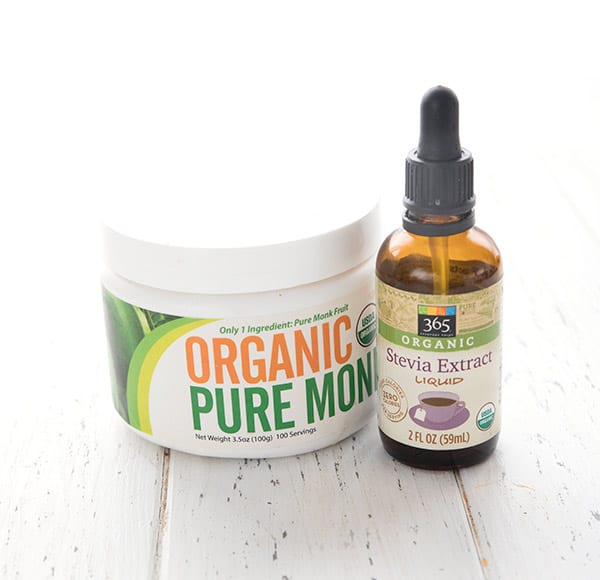
Stevia and Monk Fruit
I am lumping these two together because they have many similar properties and behave much the same way.
What are they?
Both stevia and monkfruit are naturally derived, plant-based sweeteners that are hundreds of times sweeter than sugar. Because they are extremely concentrated, a tiny amount can sweeten a whole recipe.
While that may sound like a good thing, it can have major implications for your keto baked goods. Read on…
How do they work?
Concentrated sweeteners like these have no “bulk” – they have little in the way of weight or volume so they don’t add much to your recipe other than sweetness. They can’t contribute anything to texture or consistency, and they don’t caramelize, crisp, or brown your baked goods.
Bulk is an important factor in anything from cupcakes to frosting. Substituting a non-bulk sweetener means your keto treats may not rise properly, may be more fragile, and may not set properly.
“Monk fruit sweetener”
Please be aware that many brands that bill themselves as “monk fruit sweetener” are actually mostly erythritol. The main ingredient is erythritol, with a little monk fruit to make it sweeter. This means that the sweetener will behave mostly like erythritol.
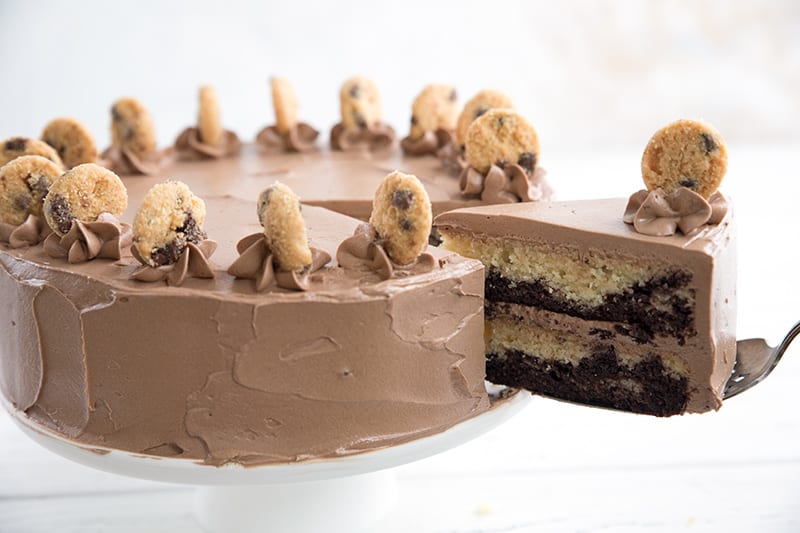
How to use sugar substitutes
I’ve thrown a ton of information at you and I know it’s hard to digest it all. I do this for a living and still I have times when a certain sweetener doesn’t behave the way I think it should. But here’s a quick cheat sheet on what to use when:
Want crisp keto cookies? Use erythritol based sweeteners like Swerve, Lakanto, or So Nourished. Other options will make your cookies soft and cakey. I highly recommend Swerve Brown for the best brown sugar substitute for cookies!
Making a keto cake recipe? Use any sweetener that has bulk (erythritol, BochaSweet, xylitol or allulose), but do be forewarned that some are not quite as sweet as sugar and you may need more of them.
Making a keto frosting? You need a bulk powdered sweetener to give your frosting structure. Erythritol, xylitol, and BochaSweet all have confectioners (powdered) versions. Allulose may as well but I am unsure of brands.
Want a gooey consistency? Try using BochaSweet or allulose, or combine it with another erythritol based sweetener. This combo is perfect for things like keto caramel sauce or my keto pecan pie.
Want keto ice cream that stays scoopable for days? My recommendation is half Swerve and half BochaSweet or allulose. Using only erythritol based sweeteners makes your ice cream rock hard, and all BochaSweet makes it too soft (it stays like soft serve!).
Just trying to sweeten your coffee? Use whatever you like best. They all work well if you don’t need a certain consistency so this is a matter of personal preference.
Still have questions?
Leave a comment and I will do my best to answer!
Adding to the confusion is that many brands on the market are blends of the keto sweeteners I outlined above. Blending sugar substitutes can maximize their sweetness and reduce potential aftertastes.
But I’ve tried such a wide array of sweeteners, I have a good idea of how most of them work. I can also take an educated guess based on the ingredients list. So drop me a line and I will give you all the information I can.

Free Bonus: Secrets to Keto Baking!
Sign up for your favorite recipes delivered straight to your inbox plus get our FREE bonus: Secrets to Keto Baking!

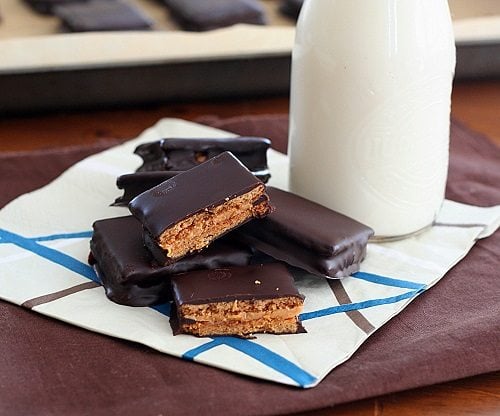

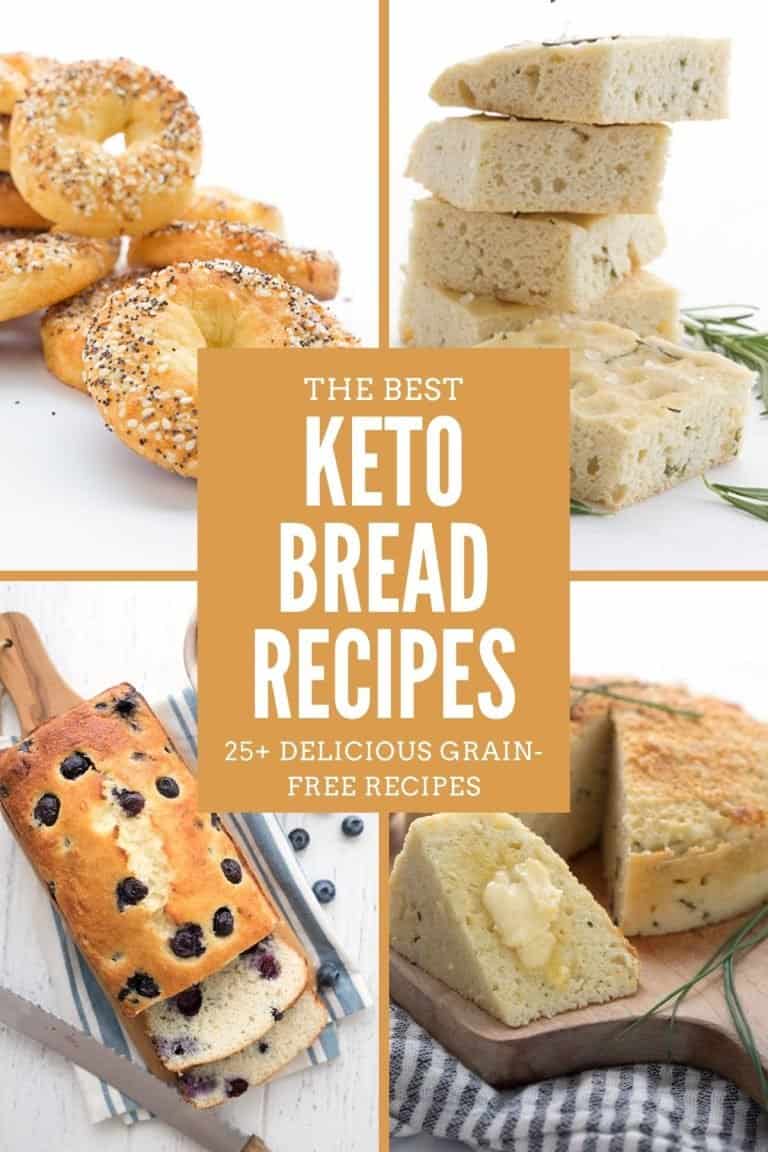










Hi Carolyn. Well…I’m finally ready to jump in and order some Bocha Sweet, as I’m running into brick walls every time I find a recipe of yours I want to try that requires it – HA! So, my question is this: if you had to have only one form of Bocha Sweet in your baked goodies tool pouch, which form would it be? Granular, Powdered or Brown? I simply can’t NOT make some of these recipes you crank out, but I refuse to buy all three versions of this stuff…I know – my loss – but I’ll end up in divorce court if I add yet another collection of sweeteners to my pantry! Please help? 🙁
I have not tried the brown at all. But the powdered drives me crazy because it clumps and hardens in the bag and is tough to work with. So the granular is what I use most.
Thank you, I’m on it!
Hello, do you have any information in Purecane Confectioners sugar? My husband and myself are slowly turning to a Keto Diet.
I tried it once and it made my cookies rock hard. So I am not a huge fan.
What about Splenda? I like it because there’s no aftertaste but I never see it in recipes or in these sweetener comparison blogs.
Why? because it’s a man-made chemical and I don’t recommend. It also really doesn’t bake very well and dries things out.
Since I can’t find Boca Sweet granular can I substitute Boca Sweet Powered?
I think for most things, yes. The trouble is that the powdered BochaSweet clumps like mad in the bag, very hard to work with. I break mine up in my food processor.
Thank you so much for all this info! I have made several dessert recipes from your web site and have a couple of your cookbooks. Everything has turned out so well! So again thank you for sharing your info.
My question is jam. I have tried a few recipes and they taste fine but do recrystalize. Any suggestions as to best sweetener to use. Thank you ????!
Do at least half allulose, if you can access it.
Thank you for this post!! I can’t stand erythritol cause of the minty taste it gives me…even when mixed with another sweetener. I like my chocolate chip and sugar cookies soft. What would I use with BochaSweet which is my all time favorite sweetener for taste!
If it works for you, do what works! 🙂
I cannot get bocha sweet here in canada and even amazon US doesn’t have stock. What can I use instead?
Just more swerve or monkfruit?
Thanks
Totally depends on the recipe!
Hi Would Swerve be the best option for french macarons?
Thanks
It would but still, getting that particular crisp and chewy texture is going to be tough.
Hi! Do you have any experience using Truvia regular or brown sugar blends?
Not for a long time now. They have a lot of different products but I am assuming you’re talking about their Sweet Complete? Those should be fine in place of Swerve. it used to be that Truvia was 2x as sweet as sugar, which meant you needed to use half as much and that got confusing for many people. Now it looks like it measure cup for cup.
Hi Carolyn
When using the Swerve brown sugar do you pack it or just fill the measuring cup and level it?
Well, I pack it lightly. It kind of packs itself as you measure it but if you pack it a lot, you may end up with too much sweetness.
My favorite holiday cookies are Pfeffernüsse. Have you made the keto version of this classic? I was looking at a recipe on Yummly and see that the carbs are 124 per serving!
Yikes. However, it uses brown and confectioner sugar, which I believe could be easily substituted with Swerve. Then wheat flour swapped for almond flour. Any suggestions?
So I think you want my Keto Snowball Cookies and to add the brown Swerve and the confectioners. Add in the spices that normally go into Pfeffernusse. but I also think you want them to spread a bit more and be a bit softer so I might leave out the coconut flour and just do the almond.
What about Stevia in the powdered (granular) form? I measure it equal to sugar. Does this still not offer any bulk in baking?
Depends entirely on the product but most are bulked with maltodextrin and it’s weirdly light and fluffy so it doesn’t offer proper bulk. What is the FIRST ingredient on your bag?
I have been time and again to make chocolate chip cookies and all they do is spread out flat, flat. I have been using the Lakanto Monk fruit sweetener. They never turn out like a full cookie, just a chocolate chip goo. Could you help me please. Andrea
Without knowing the rest of the recipe you are using, I can’t possibly help. Sounds like too much butter and not enough flour but again… I don’t know the recipe.
Hi Caroline,
I have a non sugar related question. When measuring almond flour, coconut nut flour and such do you treat it like wheat flour and lightly spoon and level or do you pack it down like brown sugar?
NEVER pack unless specified by the recipe. Scoop and level or spoon in and level. I do the scoop method to save time but I fluff things up in the container before I do.
Hi Carolyn. I want to make a recipe I found for keto marshmallows but it calls for allulose and xylitol. I won’t have xylitol in the house because sometimes I’m a messy baker and I have a dog. Can I substitute Bochasweet for the xylitol? I need a conversion chart for this because I don’t know how much Bochasweet equals the amount of xylitol in the recipe (one cup).
Try my recipe, it uses Swerve and BochaSweet. https://alldayidreamaboutfood.com/sugar-free-marshmallows/ Much safer for dogs!
Thank you so much for article on sugars. This week I made keto bagels and right out of oven, they tasted great. But like any other recipe I’ve tried, the taste and texture wasn’t near what non keto baked goods are. Very disappointing as I need this diet because I’m type 2 diabetic! Are recipes using almond or coconut flour always going to taste so different than what we used to make using reg flour?
Really would appreciate answer. Thank you.
Have you tried chicory root powder in any of your recipes? There used to be a brand called Just Like Sugar that I used to use and I learned about through paleo blogs years ago. They don’t make that brand anymore but Amazon does sell chicory root powder sweetener. It’s all fiber and no sugar alcohols. I’m just curious to know if you have any experience with it.
Am noticing a nasty taste in my mouth after eating a Keto dessert made with Swerve. Liquid exacerbates it and it will not go away. Have you ever heard of this?
Hi Linda… so one of the points I make in this article is that we all experience these sweeteners differently. You are certainly not alone in this but I don’t get any strange taste from Swerve. So it’s hard to know what will work for you because we don’t all get the same taste. Weird and frustrating but true.
Such great info. Thank you so much for sharing. It’s priceless being able to benefit from your experiences rather than “wasting” expensive products only to be disappointed in the end result. Adore your recipes, too.
Quick question. I’m currently living in Turkey where most of these sweeteners are unavailable (even via Amazon). I’ve used my spice grinder to make a “powdered” erythritol from granular (which I brought from Spain). Have you experimented with home-powdered vs store bought confectioners? I’m just wondering how different they are in end results.
I have tried it before. You can never get it quite as fine as commercially powdered sweeteners (and I have some really good kitchen equipment!). So you will probably experience residual grittiness. But if that’s what you can access where you live, then it’s worth it!
Hi Carolyn. I bought a large bag of Purecane sweetener and now I’m trying to find the best use for it. You’ve said previously that it turned your cookies into rocks and when I tried to sub it for swerve in a muffin recipe, they were good but very dense. Have you had any baking successes with Purecane that you could recommend? Thanks so much!
We have been using Pyure sweetener. It is an erythritol and stevia blend. Only half the amount of sugar called for in a recipe is needed. By only using half the amount of sugar, I am assuming this changes the bulkiness of the baked good. After reading your comments above, I know why my baked goods have been heavy.
Any information would be appreciated.
If the recipe requires bulk, then yes, a more concentrated sweetener can affect it. Do you use protein powder in your cakes and muffins? That helps lighten them a lot as well. Here is a video I did showing the difference it makes: https://youtu.be/8SA_iBl0pUU
I had not heard about using protein powder until reading your website. I watched the video you produced. Very informative. Is powdered egg white the same as the egg white protein? I have powered egg white I used with cake decorating. Just wondering if they are interchangeable. What sweetener is best for muffins and breads?
Yes, it’s essentially the same BUT some meringue powder can have sugar so check yours. For muffins, cakes and breads, almost any granular sweetener works just fine.
One more question. Swerve, which is erythritol, is use cup for cup as sugar. Pyure is erythritol and stevia, and only half the amount of sugar is used. Will my baked goods turn out if I use half the amount of Pyure in a recipe? I just bought several bags on special so I need to figure out how to make them work.
Thank you for all your help.
It really depends on the recipe and whether it needs the bulk for texture and consistency. Most muffins and scones should be fine. Most cakes too.